 Misconceptions
Misconceptions  Misconceptions
Misconceptions  History
History 10 Amazing Roman Epitaphs
 Weird Stuff
Weird Stuff 10 Niche Subcultures That Are More Popular Than You Might Think
 Mysteries
Mysteries 10 Tragic Disappearances and Deaths in Joshua Tree National Park
 History
History 10 Ways Childhood Really Sucked in the Old West
 Music
Music 10 Name Origins of Famous Bands from the 1990s
 Religion
Religion 10 Biggest Turnarounds by the Catholic Church
 Weird Stuff
Weird Stuff 10 Unbelievable Times Laws Had Unintended Consequences
 Humans
Humans Ten Historic Women Who Deserve Way More Credit Than They Got
 Movies and TV
Movies and TV 10 Films That Spawned Major Lawsuits
 Misconceptions
Misconceptions 10 Phony Myths and Urban Legends That Just Won’t Die
 History
History 10 Amazing Roman Epitaphs
 Weird Stuff
Weird Stuff 10 Niche Subcultures That Are More Popular Than You Might Think
Who's Behind Listverse?

Jamie Frater
Head Editor
Jamie founded Listverse due to an insatiable desire to share fascinating, obscure, and bizarre facts. He has been a guest speaker on numerous national radio and television stations and is a five time published author.
More About Us Mysteries
Mysteries 10 Tragic Disappearances and Deaths in Joshua Tree National Park
 History
History 10 Ways Childhood Really Sucked in the Old West
 Music
Music 10 Name Origins of Famous Bands from the 1990s
 Religion
Religion 10 Biggest Turnarounds by the Catholic Church
 Weird Stuff
Weird Stuff 10 Unbelievable Times Laws Had Unintended Consequences
 Humans
Humans Ten Historic Women Who Deserve Way More Credit Than They Got
 Movies and TV
Movies and TV 10 Films That Spawned Major Lawsuits
10 Examples Of Cloud Seeding And Weather Control
When people speak of weather control and cloud seeding, many minds turn to conspiracies and dark corners of the world’s governments looking to cripple their enemies with a flood, hurricane, or both. And, as limited as it is, there is some documentation showing that government departments have at least looked at the possibility of such environmentally orientated weapons.
However, many of the cloud seeding programs and experiments that take place, if successful, offer those in their respective regions a chance to avert droughts, increase crop production, or assist in the overall cleanup of the atmosphere. Here are ten examples—good, bad, and indifferent—of attempts to control the weather.
10 China ‘Clears Rain’ Ahead Of 2008 Olympics
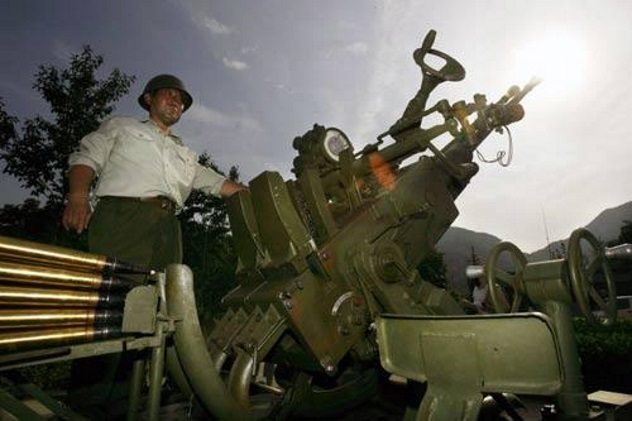
In the run-up to the 2008 Olympics in Beijing, more specifically the opening ceremony, the Chinese government openly operated their cloud seeding program so that the first day of the Olympic Games would not be marred by rain or any other unsavory weather.[1] Over 1,000 rockets were fired into the air in the days leading up to the ceremony in an effort to disperse rain clouds that were threatening to dampen the event.
For their part, cloud seeding is a regular occurrence for the Chinese government, which openly conducts such projects ahead of public holidays and important events. And it isn’t always to ensure dry days. Sometimes, rain is “made” days in advance, which then helps to clear smog and dissipate pollution, creating a photogenic environment with blue, clear skies. Despite concerns about the nature of such policies, which include firing silver iodide into the atmosphere, the Beijing Weather Modification Office insists that the levels used are perfectly safe for humans.
9 CIA Uses Weather As A Weapon
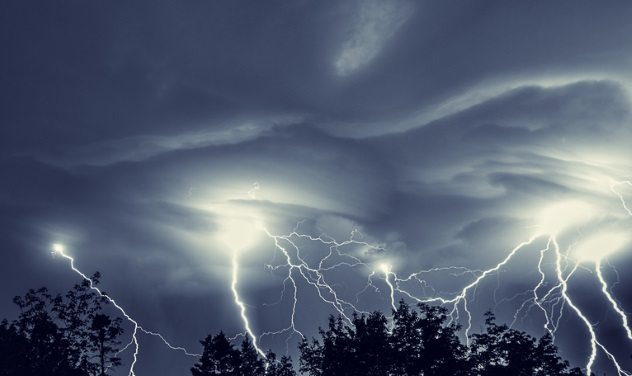
It is perhaps no surprise to find the CIA mixed up with weather control and modification.[2] But when the admission finally comes, it still hits home a little harder—as it did when Alan Robock, a climatologist from Rutgers University who is familiar with many CIA weather experiments, commented publicly in December 2015.
Among many examples given by Robock was a five-year mission conducted by American intelligence services during the Vietnam War. US military planes took part in extensive, and successful, cloud seeding missions that prolonged monsoon seasons, handing the Americans the advantage of foresight. They also used similar attempts to induce excessive rain over Cuba so as to cripple their sugar harvests.
If Robock is to be believed, many other nations around the globe are also using the weather and weather modification as a weapon, with delivery methods ranging from “rain-producing chemicals” being distributed from airplanes to highly advanced pulse technologies.
8 Project Cirrus Causes Hurricane To Change Direction

Perhaps one of the more documented weather experiments concerning the United States military was one code-named Project Cirrus, which took place in October 1947.[3] This particular experiment involved a consortium of sorts made up of the US Air Force, Army Signal Corps, and the Office of Naval Research as well as the General Electric Corporation, whose involvement, to those in conspiracy circles, would raise an eyebrow or two, given the company’s alleged involvement in supplying both sides during World War II.
The experiment was the first attempt to modify a hurricane. The storm in question, which appeared to be headed out to sea, is said to have changed direction and caused considerable damage to Savannah, Georgia, following a US military plane’s flight directly into it. Inside the hurricane, the aircraft dropped 82 kilograms (180 lb) of crushed dry ice.
The hurricane’s sudden change in direction was blamed squarely on Project Cirrus, and it was consequently shut down amid threats of lawsuits. However, those involved already knew the reaction to their actions, regardless of the damaging consequences to the citizens.
7 The South African Rainfall Enhancement Program
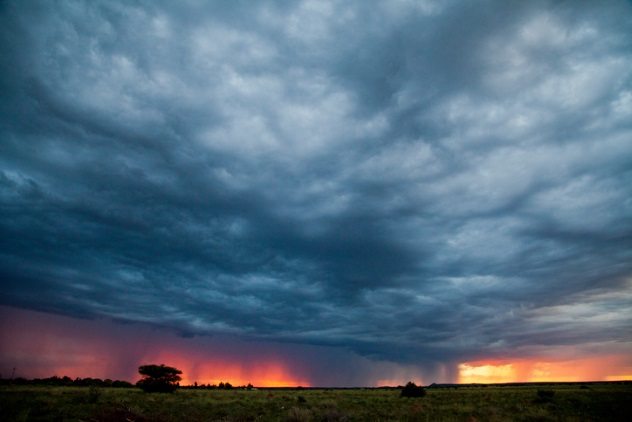
Using the South African technological solution of hygroscopic flare seeding, a sophisticated cloud seeding program operated from 1997 to 2001 in an effort to increase rainfall and aid in crop production and increased harvest.[4] Radar and satellite technology were also utilized throughout the four-year experiment. In total, 95 storms were seeded (started), and then following monitoring and tracking, around a third of these were selected for “treatment” with a view to increasing the rainfall and, to a lesser degree, influencing exactly where the rain would fall.
On average, of the 37 storms that were treated, the amount of rainfall doubled from what would normally be expected. The project was recommended for further study and development, with the added recommendation that such endeavors should remain high on the government’s priority list. If the project could be perfected and utilized efficiently, it could result in significant socioeconomic benefits for the targeted areas.
6 Illinois Looked At Weather Modification In The 1970s
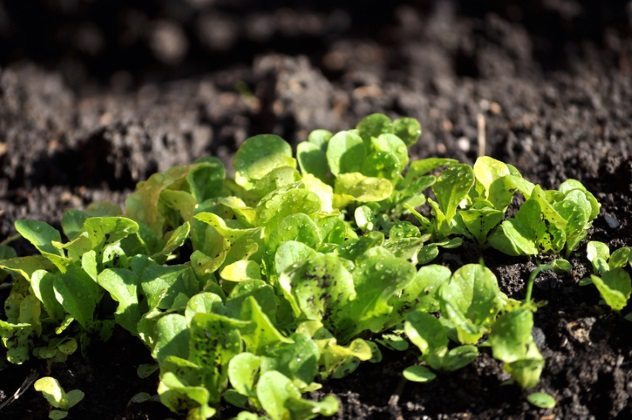
The Midwest state of Illinois, which relies heavily on farming as a huge portion of its industry, was looking at the benefits of weather modification as far back as July 1975.[5] A paper written by then-president-elect of the Weather Modification Association, Stanley A. Changnon, stated that instead of the citizens of Illinois “watching the skies anxiously,” by embracing weather modification, the people could take control of the weather themselves.
Furthermore, Changnon argued, Illinois’s wide variety of weather—which ranged from subfreezing winter storms to severe hailstorms and tornadoes in the spring to “tropical heat” in the summer—made the case for weather modification even stronger, although he would also admit there would likely be “future problems from technological developments.” It was Changnon’s opinion that Illinois (at the time) led the whole of the United States in weather modification research. How much of that research went live, however, is perhaps a little more guarded.
5 Israel Has Been Seeding Storms Since The 1970s

Illinois wasn’t the only part of the world that was looking at weather modification, particularly cloud seeding, in 1975. Israel has conducted extensive research and taken part in substantial cloud seeding programs since the early 1970s in order to increase the little rainfall that finds its way to the country from the Mediterranean Sea.[6]
Further research over the years has found that clouds formed over the Sea of Galilee have greater “seeding potential” than those previously targeted, so resources and cloud seeding programs have more recently focused on this area. It has also been discovered that clouds over Galilee are more naturally seeded by sea salt spray, another factor that has supported the calls for the continuation of such experiments.
Much like the cloud seeding experiments conducted in South Africa, the use of satellite and radar technology is also key in the further study of clouds and storms and how best to manipulate them.
4 The UAE Is One Of The First Arabian Countries To Cloud Seed

Always known to be at the cutting edge of technology and development, perhaps it is no surprise that the United Arab Emirates is one of the first Arabian countries to use and develop cloud seeding technologies and programs.[7] Using satellites and radar, all aspects of the weather around all areas of the country are monitored 24 hours a day, seven days a week. From this extensive research, scientists can tell which clouds at which time of year will be most successfully seeded, even down to reach regions of the country these will form in.
In addition to cloud seeding, these experiments also concern other things such as environmental pollution, monitoring potential natural disasters, and even offering advice and research information for the country’s agriculture. The UAE also monitors the cloud seeding projects of other countries around the world and what (if any) effect they may have on their own weather.
3 Canada Prevents Damage From Intense Hailstorms
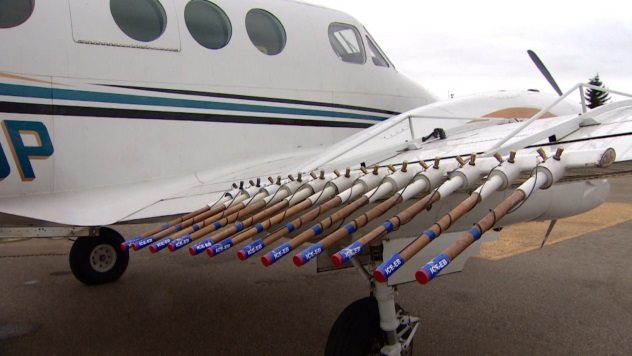
Intense hailstorms are a part of everyday life for many parts of Canada, so much so that the Alberta Hail Suppression Project actively flies its planes into the eyes of such storms, seeding the clouds as they do so. If successful, the seeding decreases the damage caused by the storms.[8] So great is the damage caused by hailstorms to residential properties and businesses alike that the insurance industry foots the bill of these cloud seeding projects to the tune of $3 million a year. That perhaps gives you a good idea of the amount of money they were paying out to their customers annually.
Working out of their central base at Didsbury Airport in Alberta, pilots fly their planes into the storms as soon as they are detected and then fire flares containing silver iodide. These laced flares drastically decrease the size of the ice, sometimes to the point that the hailstones completely melt before they have a chance to hit the ground.
Perhaps an interesting twist to the program, intense hailstorms are becoming increasingly regular in some parts of the country. Whether this is consequential or coincidence is not known.
2 Maharashtra Cloud Seeding Experiment Finally Goes Live

Following regular and damaging droughts in the region, the government of the Indian state of Maharashtra announced that beginning in 2017, they would operate a three-year cloud seeding program in an effort to combat the problem.[9] Much like other countries, they will utilize silver iodide and dry ice, delivered by planes that will fly high into the atmosphere above the region.
The experiment has been in the planning stages for several years, but ironically, “above normal” seasons of rain delayed its launch for considerable time. Now that it is finally ready to go ahead, scientists hope to collect valuable data so as to better understand weather cycles of the region. The three-year experiment will potentially benefit the immediate target area, but it is also a small part of a global research program under the direction of India’s Ministry of Earth Sciences, whose main goal is to better understand how chemicals and clouds react and, in turn, what the effect of those reactions will be on the planet’s climate.
1 Curtailment Of Industry Forces Mexico To Look At Cloud Seeding
 Mexico, like many other countries around the planet, has found itself increasingly at the mercy of the skies as droughts seemed to increase in regularity and duration. A particularly severe drought occurred in the country during the late 1940s.[10] Aside from the obvious effects on agriculture, there were negative effects on the generation of hydroelectric power as well as “curtailment of industrial production.”
Mexico, like many other countries around the planet, has found itself increasingly at the mercy of the skies as droughts seemed to increase in regularity and duration. A particularly severe drought occurred in the country during the late 1940s.[10] Aside from the obvious effects on agriculture, there were negative effects on the generation of hydroelectric power as well as “curtailment of industrial production.”
In short, the drought had the potential to bring the entire country to a standstill, and it got even worse in 1949. So, target areas were identified, and planes “equipped to burn silver iodide” were sent into the atmosphere high above the regions in question. The planes spent up to two hours seeding their target areas each day during the program.
Read more about weather and attempts to control it on Top 10 Times We Tried Controlling The Rain And Failed and 10 Conspiracy Theories About Weather Modification.








